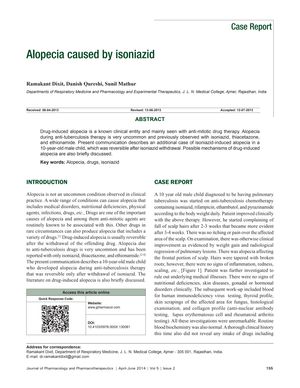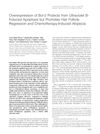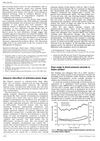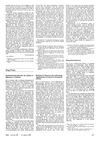Alopecia Caused by Isoniazid
April 2014
in “
Journal of Pharmacology and Pharmacotherapeutics
”

TLDR The boy's hair loss was caused by the tuberculosis drug isoniazid but grew back after stopping the medication.
The document describes a case where a 10-year-old boy developed alopecia, specifically from the frontal scalp, during treatment with isoniazid and other anti-tuberculosis drugs. After excluding other causes, isoniazid-induced alopecia was diagnosed. This type of alopecia, known as anagen effluvium, involves a sudden stop in hair growth. The boy's hair began to regrow 3 weeks after stopping isoniazid, with full recovery after 6 weeks, and he was cured of tuberculosis after 6 months without further hair loss. Drug-induced alopecia is rare with anti-tuberculosis medications, and while the mechanism behind isoniazid-induced alopecia is not fully understood, an androgen mechanism is proposed. The case highlights the need to be aware of this potential side effect to maintain patient adherence to tuberculosis therapy.






